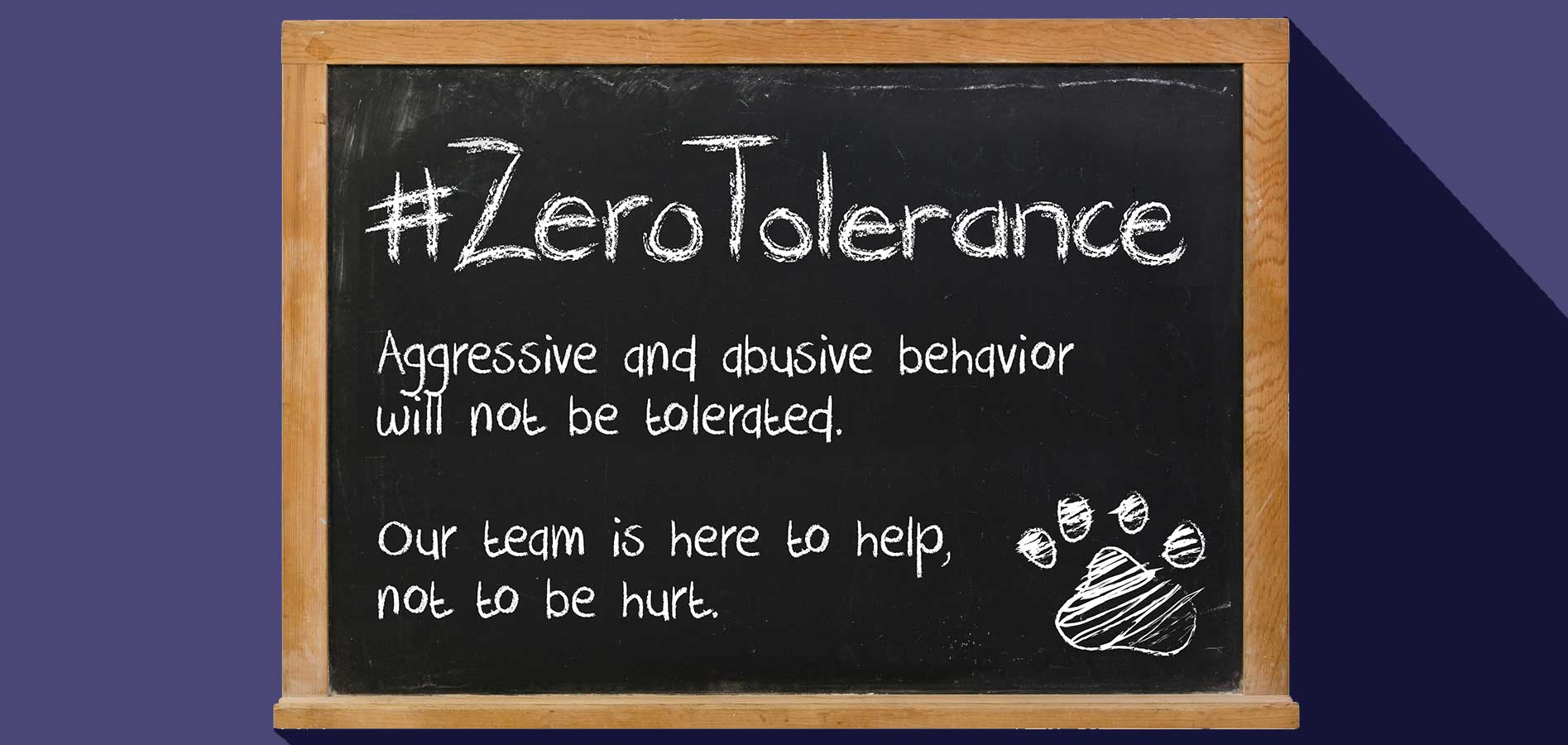As a veterinary professional, there are few things more antithetical to everything we do than firing a client. We spend all day, every day, not merely trying to “do no harm,” but to actively make the lives of our patients better. But no matter how distasteful and unappealing it might be to even consider removing a person from your client base, there are very valid reasons to do so—and you need to be prepared, especially if you manage a practice.
Think you may need to fire a veterinary client? Check out my step-by-step guide below.
Step 1: Create a culture with boundaries
Before there’s ever a reason to fire a veterinary client, create a culture in your practice where your boundaries are clear among your staff. Write them out explicitly and put them in your employee handbook.
Here’s an example:
“Here at The Animal Hospital, we do not tolerate discrimination, intimidation, or abuse of any kind, be it toward a guest or a staff member. Anyone in violation of this will be asked to leave the premises immediately.”
These boundaries must be consistent and fair. Clearly outline what is unacceptable behavior and the process for reporting it.

Step 2: Focus on behaviors, not people
One of the best pieces of advice I received as a manager was to focus on behaviors, not on a person—and I’d recommend this be your guide when setting your limits.
Many of us have experienced a pain-in-the-neck (PITN) client. You know the type:
- They ask at least weekly (but sometimes daily) questions.
- They keep your doc on the phone for WAY too long when they call.
- They may be short to CSRs or technicians because they know how to get to the person they want.
Some questions you should ask yourself about your PITN client:
- Does the PITN listen to the advice of your doctors?
- Are they routinely bringing their pets in for wellness services and scheduled preventive care procedures?
- Do they show up to these appointments on time?
- Do they pay on time?
- Do they use language or tone that is rude, condescending, or abusive?
- Do they ever say, “I’m sorry?”
- Is this a difficult case or a difficult client?
How you answer these questions should guide whether you classify the client as “needy” or as “not needing to be at our practice.”
Step 3: Get your ducks in a row
Before you actually fire a client, you’ll want to make sure your ducks are in a row. Ensure you’ve interviewed all staff that may have witnessed or been involved in the situation with your soon-to-be former client. Make sure your patient and client files are fully updated with those notes and findings. Print out the full patient record, removing any staff notes (particularly those involving client incidents). Finally, type up a form or letter, putting this relationship’s termination in writing.

Step 4: Talk to the client
Now it’s time to talk to the client.
Note: Ensure that your soon-to-be-fired client’s pet is not undergoing any current medical issues.
Focusing on their behaviors, let the client know that your practice is no longer the right fit—for them and your staff. Stay calm and collected—chances are good that they will not. Offer their pet’s full history (or ask where they’d like it digitally sent), and wish them and their pet well.
Avoid combining the words “I’m” and “sorry”—this isn’t a conversation so much as a declaration, and you do not want to open a door for reconciliation.

Step 5: Take action to make it official
Once the client has decided whether they want a hard or digital copy of their records, take immediate action:
- Send or hand over the records.
- Update and deactivate their account in your veterinary practice software (and the Vet2Pet dashboard, if applicable).
- Let your team know that we’ll not be working with “Mr. Client” any longer.
- If your practice software allows, add a pop-up in the client’s file alerting future employees of what to do in the event that the client reaches out again. The alert could say: “Client terminated by PM Brad on 3/14; any communication must go through a manager.”
One lesson I learned during the pandemic is that there are plenty of clients who would break down your doors to get in with their pet. Don’t sacrifice your patience, your veterinary team’s mental wellbeing, and the quality of your day by catering to people who can’t or won’t respect your time. Moreover, cultivating a culture of respect—from your office, and down through the treatment area, through your lobby, and enveloping your clientele—will ultimately give you a happier team and open your bandwidth to accommodate more great (and fewer PITN) clients.
PITN clients can throw a wrench in your team’s efficiency, but Vetsource’s Vet2Pet all-in-one client engagement system can help to streamline processes and improve communication, even with the most difficult pet owners. Schedule a demo to find out how Vet2Pet could help your practice.



